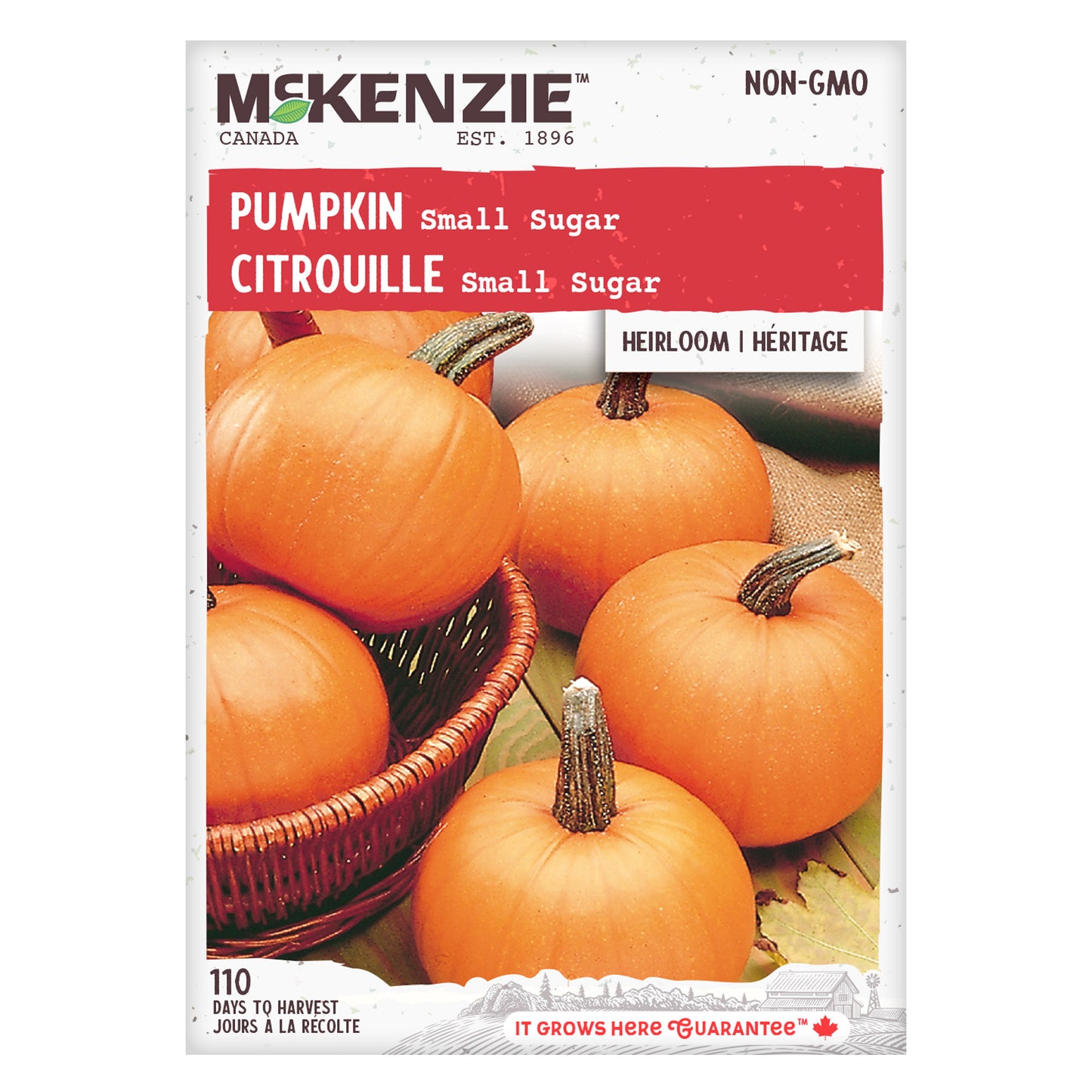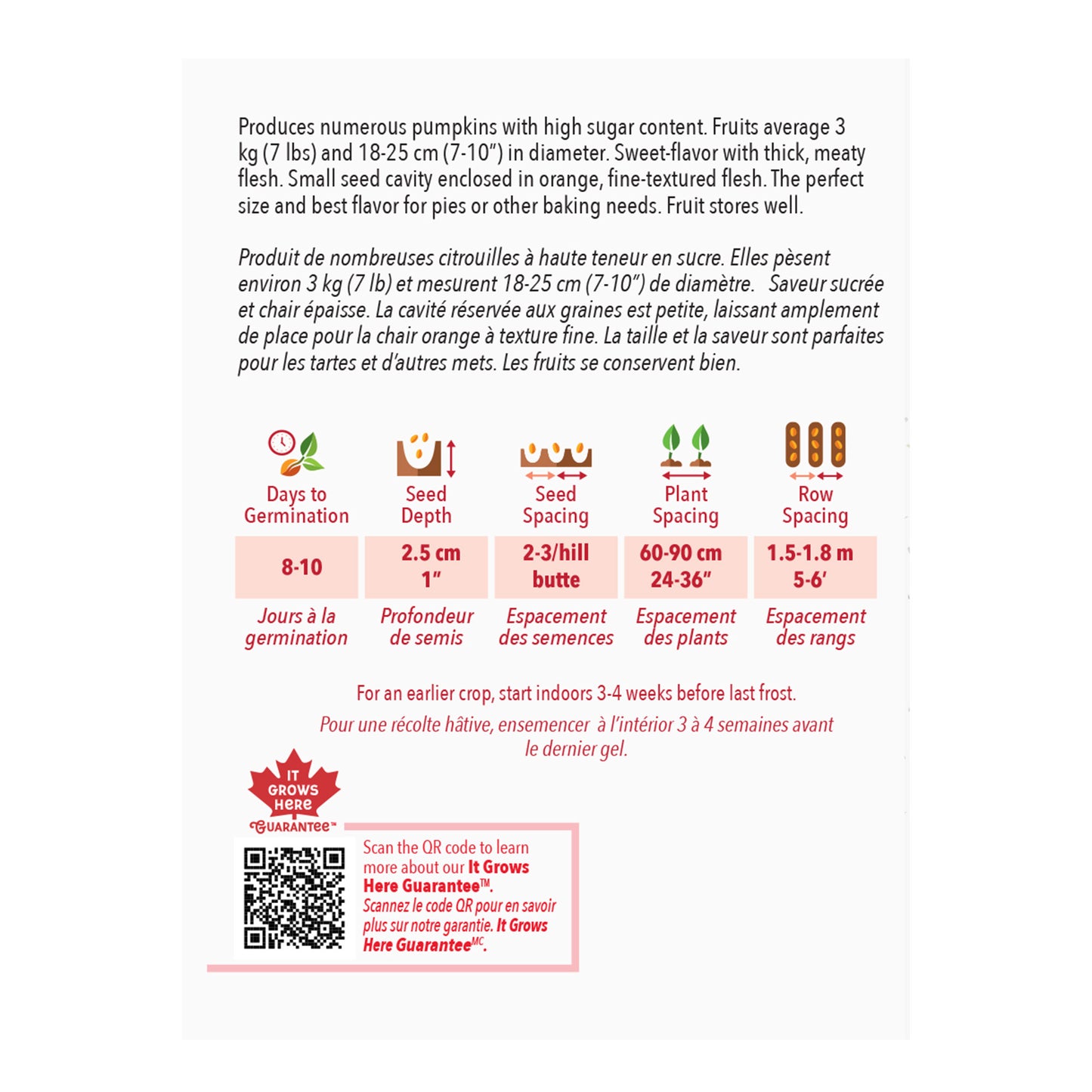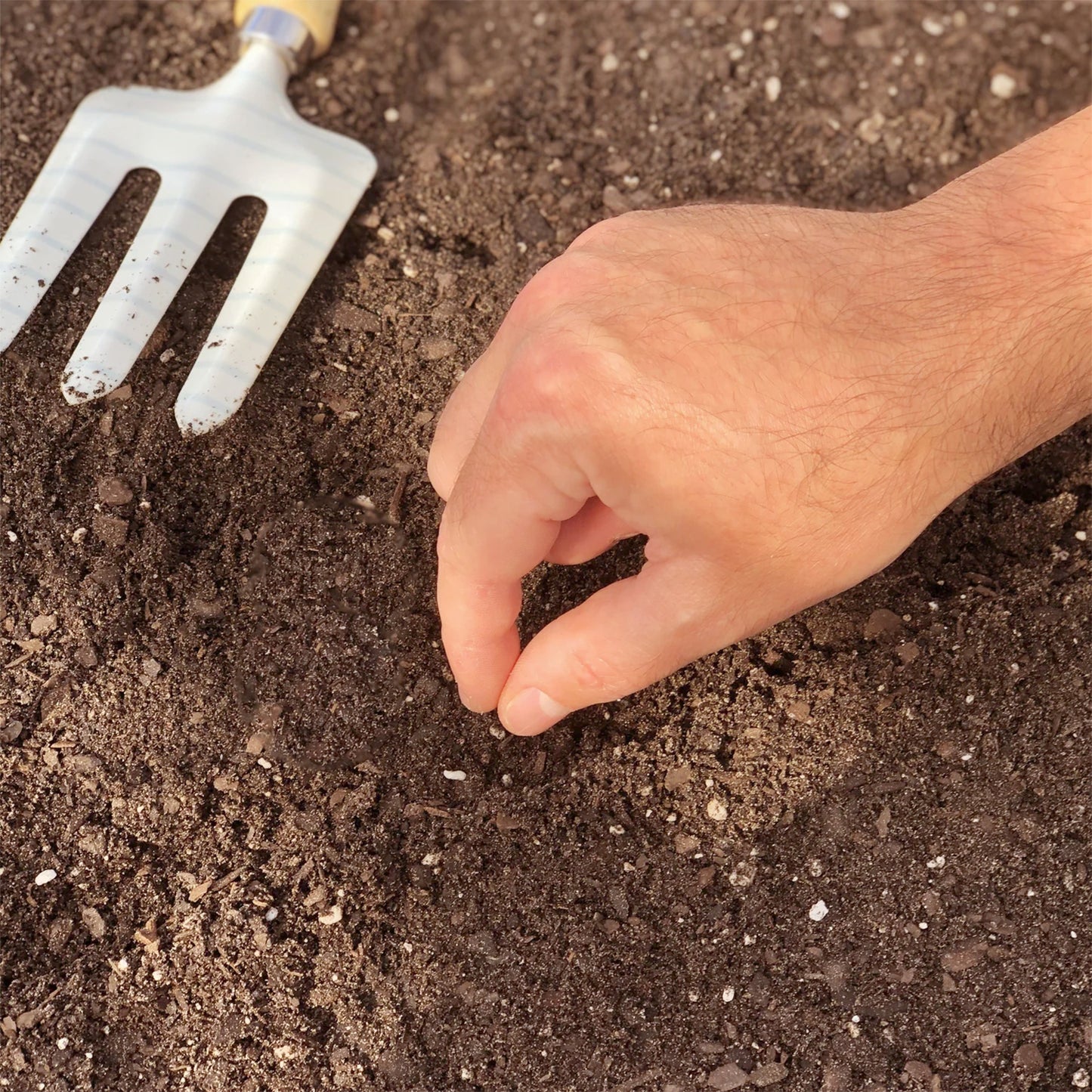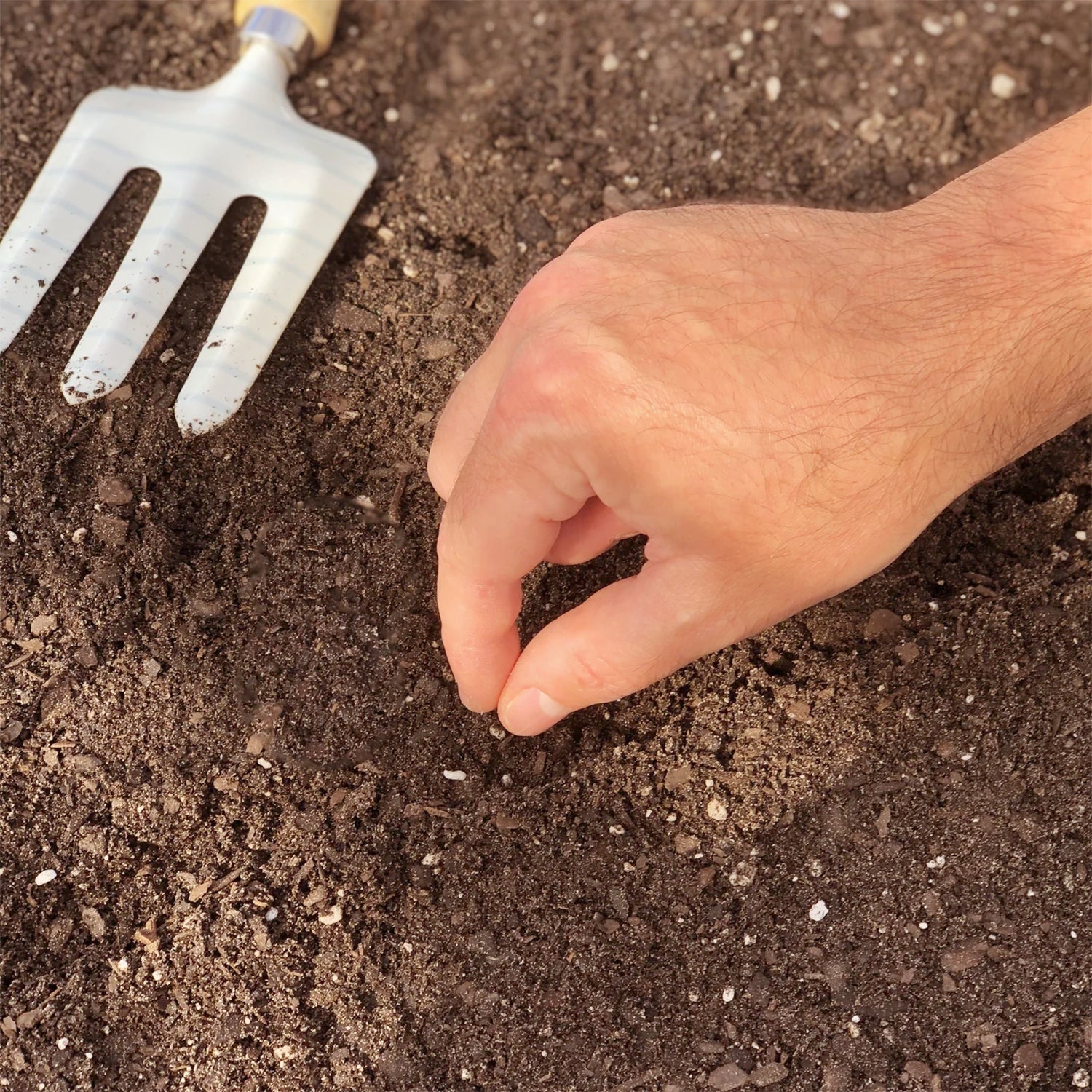10% Off E-Gift Cards With Promo Code | View All Offers >
Pumpkin, Small Sugar Seeds
Earn 3 points for this item with our
rewards program.

Small Sugar Pumpkin Seeds are ideal for growing sweet, richly flavored pumpkins.
Small Sugar pumpkins are the piemaker’s favorite. Boasting sweet flavour and thick, meaty flesh it's no wonder it's a favorite. Matures to 15 to 20 cm (6-8") with orange, fine-textured flesh enclosing a small seed cavity. This versatile variety can be frozen or used as decorative centerpieces as well.
- SKU: 143788
- Common Name: Pumpkin
- Botanical Name: Cucurbita pepo
Safe
for Bees
Grows
Best In:
Days to
Germination:
Water
Needs:
Days to
Maturity:
Best
Container Size:
Growing Height:
- Plant Type: Vegetable
- Plant Lifecycle: Annual (plant every year)
- Seed Type: Heirloom
- Fill Weight (grams): 2.5 g
- Approximate Seed Count: 15-18
- Characteristics: Attracts bees
- Planting Method: Direct Sow
- Colour: Orange
- Water Needs: Average 2.5-5 cm (1-2 in.) per week
- Landscape Use: Edible Garden
- Companion Planting:
Plant near pole beans, calendula, corn, marigolds, nasturtiums, oregano. Nasturtiums have the ability to shield against pumpkin and squash beetles. Oregano offers overall pest protection. Calendula acts as a deterrent for beetles and root nematodes. Squash is commonly planted alongside corn and beans, known as the "three sisters," to confuse the adult vine borer.
- Flavour: Earthy with a hint of nutty flavor
- Preparation Ideas: Reheat oven to 325 F. Cut pumpkin in half. Using a spoon, scrape out the seeds and fibers. Cut the halves into chunks. Place the in a baking dish with flesh side up. Add enough water to cover the bottom of the baking dish. Cover tightly with aluminum foil. Bake for approximately 1 hour or until flesh is fork tender. Remove from oven and let the pumpkin cool. Remove flesh from peel and either mash like potatoes or puree in a blender. The puree can be used to make fresh pumpkin pie, muffins or cookies in recipes that call for pumpkin puree.
Pumpkin seeds can be sown directly in the garden when the soil is warm and all danger of frost is past and the soil has warmed. Soil temperature (not air temperature) should be between 18°- 35°C (65°- 95°F). Plant 2-3 seeds in mounds 1.5-1.8 m (5-6') apart. Press seeds into the soil to ensure good contact and cover with 2.5 cm (1 in.) of soil. After planting, water the seeds with a gentle mist or shower. It is critical to keep the soil consistently moist, but not soggy during germination. When your seedlings reach a height of a few centimetres (inches) and have developed 2 or 3 pairs of leaves, it is important to thin them out, according to the plant spacing indicated below. Do not allow the soil to become dry, as young plants have underdeveloped roots and can quickly dehydrate, particularly in windy conditions. For an earlier crop, pumpkin seeds can be started indoors 3 to 4 weeks before the last frost in your area. Follow the seed depth and spacing guidelines indicated below. Once all danger of frost has passed, seedlings should be hardened off before planting in their growing location. Seedlings should be transplanted according to the plant and row spacing directions below. Regularly monitor your plants and ensure that the soil remains moist, but not soggy while they establish themselves in their new environment.
- Planting Depth: 2.5 cm (1in.)
- Seed Spacing: Sow pumpkin seeds roughly 2-3 per hill apart in rows, keeping rows approximately 1.5-1.8 m (5-6') apart.
- Plant Spacing: 60-90 cm (24-36 in.)
- Instructions for Nutrient Care: Apply SUPERThrive once per week. Soak in solution of 1/4 tsp per gal for 15 min. or longer depending on size and type.
- Pumpkin plants can take up a lot of space in a garden. If space is an issue, plant them on the outer edge of your garden.
- Pumpkins require pollination to produce fruit. Consider growing bright-colored flowers nearby to attract pollinators.
- Try to water plants at the base of the plant rather than overhead unless it fts a sunny day. Dampness on foliage and fruit invites rot and disease.
- As the fruit develops, turn them—with great care not to hurt the vine or stem—to encourage an even shape. Place a board or piece of piece of plastic mesh under pumpkins to protect them from rotting on the soil.
- From late summer on, remove any blossoms or new fruit to enhance growth on fruit that is already formed.
- Harvest after the plants have died back and the skins are hard. The skin of a ripening pumpkin turns a deep, solid orange color and the stem hardens. Thump the pumpkin with a finger; the rind will feel hard and sound hollow. Press a fingernail into the pumpkin’s skin; if it resists puncture, it is ripe. Carefully cut the fruit off the vine with a sharp knife or pruners; do not tear it. Be sure not to cut too close to the pumpkin. Leave 7-10 cm (3- 4 in) of the stem to increase its keeping time.




Pumpkin, Small Sugar Seeds
Register to receive a notification when this item comes back in stock.
Thanks! We'll let you know when this item is back in stock.
You may also like

Join our rewards program today to start saving!

Free Shipping on orders over $35

There are a ton of ways to earn!







